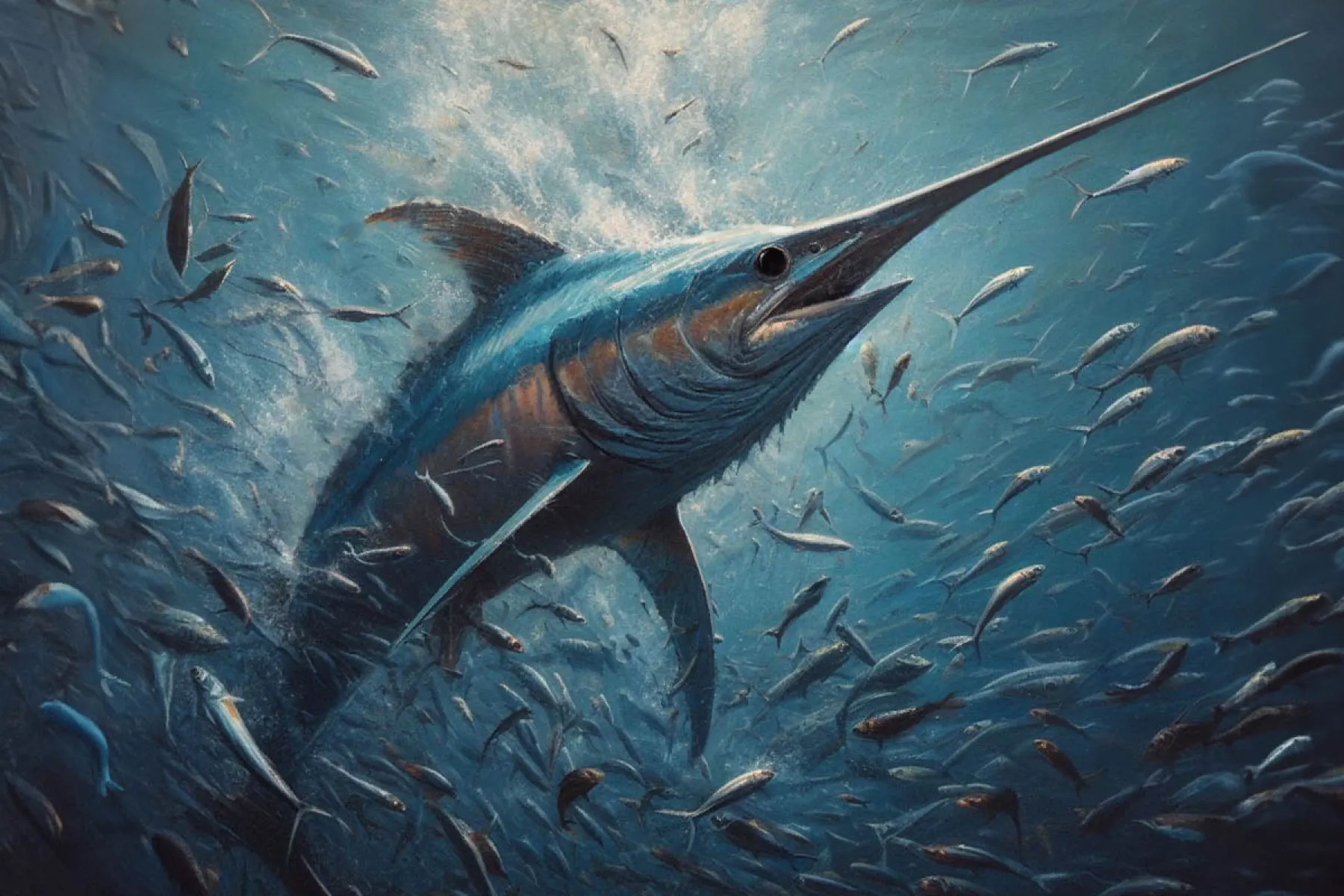Catching a swordfish is the ultimate achievement for many anglers, representing a blend of challenge, skill, and exhilaration. These majestic creatures, with their elusive nature and formidable size, have long captured the imagination of fishermen worldwide. To successfully land one, anglers must master specialized tactics tailored to the unique behavior and habitat of swordfish. This comprehensive guide, in collaboration with the experts at In The Spread (ITS), offers a deep dive into the world of swordfish fishing, providing valuable insights and strategies to elevate your game and maximize your chances of success.
Understanding Swordfish Behavior and Migration Patterns
At the heart of effective swordfish fishing lies a profound understanding of their behavior and migration patterns. Swordfish are nomadic creatures, traversing vast distances in search of food and favorable conditions. Their movements are influenced by a myriad of factors, including ocean currents, water temperatures, and prey availability. By deciphering these patterns, anglers can pinpoint potential hotspots and increase their likelihood of encountering swordfish.
Swordfish are found in tropical and temperate waters across the globe, inhabiting depths ranging from the surface to over 1,800 feet. They exhibit a remarkable ability to regulate their body temperature, allowing them to thrive in a wide range of environments. Specialized organs near their eyes enable them to navigate and hunt effectively in the dark depths of the ocean, making them formidable predators.
Feeding primarily on fish and squid, swordfish employ their iconic bills to slash and stun their prey before devouring it whole. Their diet and hunting behavior vary depending on factors such as prey abundance and environmental conditions. Understanding these feeding habits is crucial for devising effective fishing strategies.
Swordfish are highly migratory, undertaking seasonal journeys in search of spawning grounds and optimal feeding areas. Their movements are influenced by factors such as water temperature, prey availability, and reproductive cycles. By tracking these migrations using tools such as sea surface temperature charts and satellite imagery, anglers can increase their chances of intercepting swordfish along their migratory routes.

Essential Gear and Tackle for Swordfish Fishing
Equipping yourself with the right gear and tackle is essential for tackling swordfish effectively. From robust rods to specialized reels, each piece of equipment plays a vital role in the pursuit of these powerful predators. Here’s a breakdown of the essential gear and tackle for swordfish fishing:
- Rod: Opt for a heavy-duty rod with a length of 6 to 7 feet and a line rating of 50 to 80 pounds. Look for a rod with a strong backbone to withstand the rigors of deep drops and powerful runs, coupled with a flexible tip to absorb shocks and prevent break-offs.
- Reel: Invest in a high-quality reel with a large line capacity, smooth drag system, and high gear ratio. A conventional reel with a level wind mechanism is preferred for better control and durability. Ensure that the reel can accommodate at least 1500 yards of braided line to handle the long battles with swordfish.
- Line: Choose between monofilament and braided line depending on your preferences and fishing conditions. Monofilament line offers stretch and abrasion resistance, while braided line provides strength and sensitivity. Consider using a combination of both for optimal performance.
- Leader: Use a heavy-duty leader made of monofilament or dacron to connect the main line to the hook or lure. A leader with a length of 100 to 150 feet and a strength of 150 to 300 pounds is recommended to withstand the powerful strikes and abrasions encountered when fishing for swordfish.
- Hook: Select the appropriate hook size and style based on your bait and fishing technique. Popular choices include circle hooks, J-hooks, and Southern hooks, each offering distinct advantages depending on the bait presentation and target species.
- Bait: Experiment with a variety of bait options, including squid, mackerel, bonito, and ballyhoo, to entice swordfish. Rig your bait securely on the hook to ensure natural movement and scent dispersion in the water.
By outfitting yourself with the right gear and tackle, you can enhance your chances of hooking and landing swordfish while minimizing the risk of gear failure or breakage.
Effective Bait Rigging Techniques for Swordfish Fishing
Rigging your bait properly is essential for attracting swordfish and enticing them to strike. Whether you’re using squid, mackerel, or bonito, employing the correct rigging techniques can make all the difference in your success rate. Here are some effective bait rigging techniques for swordfish fishing:
- Squid Rig: Squid is a natural prey item for swordfish and is commonly used as bait. Rig your squid securely on the hook using methods such as sewing, pinning, or rubber banding to ensure optimal presentation and movement in the water.
- Mackerel Rig: Mackerel is another popular bait choice for swordfish fishing, thanks to its oily flesh and strong scent. Rig your mackerel with variations such as tail cutting or belly slicing to release scent and create an enticing trail for swordfish.
- Bonito Rig: Bonito offers a combination of durability and attractiveness, making it an effective bait for swordfish. Experiment with rigging techniques such as tail cutting or belly slicing to maximize scent dispersion and movement in the water.
- Ballyhoo Rig: Ballyhoo is prized for its slender profile and reflective properties, making it a versatile bait option for swordfish. Rig your ballyhoo securely on the hook to ensure natural swimming action and visibility in the water.
By mastering these bait rigging techniques and adapting them to different fishing scenarios, you can increase your chances of enticing swordfish
Image/Source: InTheSpread





